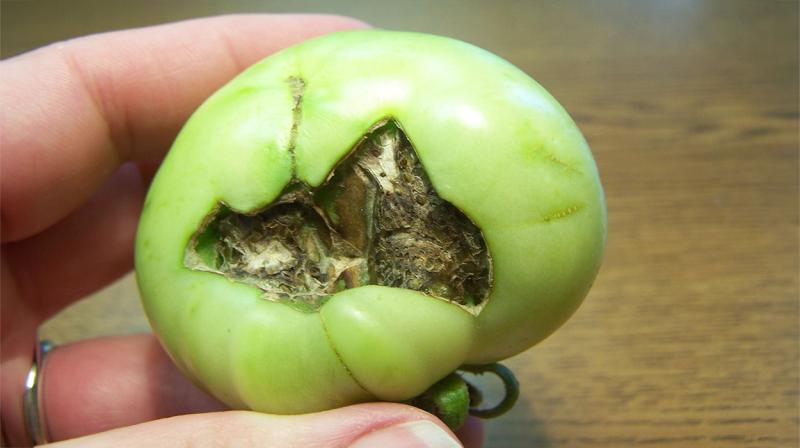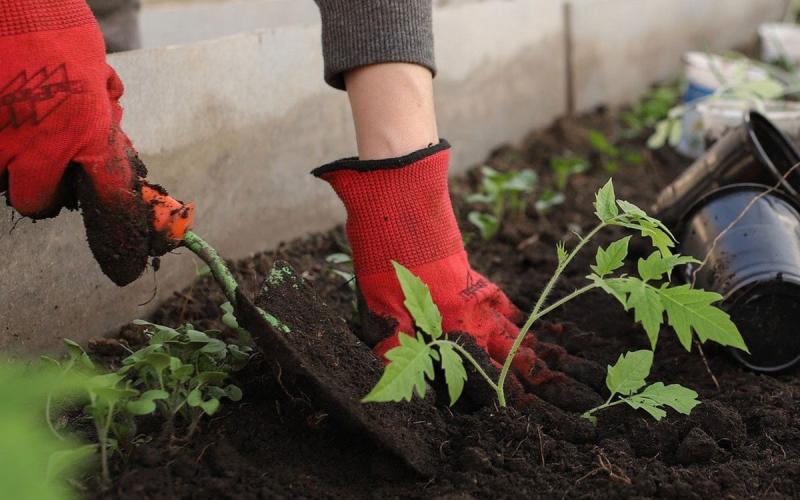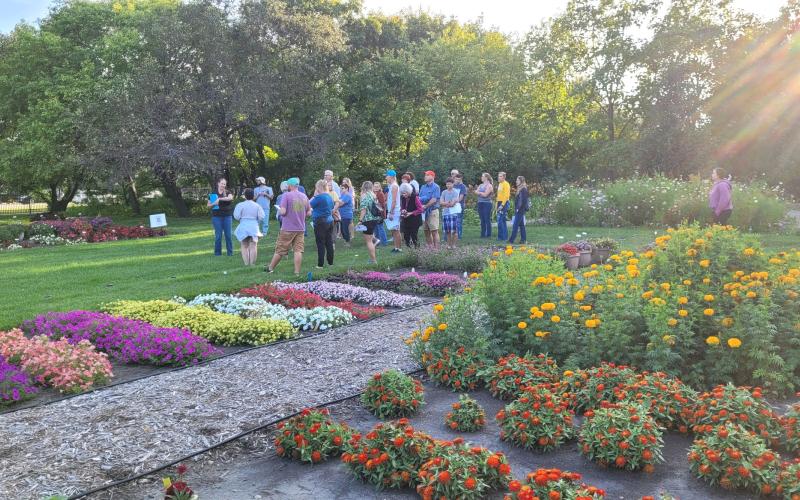Written by Rhoda Burrows, former Professor & SDSU Extension Horticulture Specialist.
Are you wondering why your tomatoes won’t ripen? Have you heard that heat will make them faster? Below are some answers to commonly told myths about tomatoes.
Common Tomato Myths
Myth 1: Tomatoes won’t really ripen until temperatures are into the upper 80s to 90s.
- Temperatures above 86 degrees Fahrenheit significantly reduce lycopene and carotenoid (red/yellow colors). Depending on the cultivar, the fruit may turn yellow instead of red, or even stay partially green. Yellow shoulders may develop on normally red fruit (Figure 1).

- Temperatures below 54 degrees Fahrenheit at night will slow ripening.
- Temperatures between 60 and 75 degrees Fahrenheit are ideal for tomato ripening. It can take up to 60 days after flowering for a tomato to grow and ripen. Only 4 days difference (46 versus 42) between flowering and fruit ripening occurred in greenhouse tomatoes when temps were raised from 72 to 79 degrees Fahrenheit.
- Daytime temperatures in the 80s can decrease tomato size and number. The roots of tomatoes in pots don’t function as well when temperatures increase over 60 degrees Fahrenheit.
- Day temperatures over 90 degrees Fahrenheit paired with night temperatures above 70 degrees Fahrenheit can decrease fruit set. As few as three hours at 104 degrees Fahrenheit can stop fruit set altogether.
- High temperatures can also increase the incidence of blossom end rot (Figure 2), because the fruit may expand faster than the plant can supply calcium to it. Another issue that may develop is thick, white tissue inside the fruit.

- Tomatoes will start to turn color 2 to 3 days after reaching mature green.
- At about ten days after beginning to color, the fruit forms a separation layer between the stem and the plant, so it no longer receives anything into the fruit and can be harvested.
- There are cultivar differences in resistance to both heat and cold.
- For example, Super Sioux is a non-hybrid cultivar developed in Nebraska that has good resistance.
- Celebrity, New Girl, and Valley Girl are others that are fairly common, but there are many others.
- With climate change, plant breeders are working on more heat-resistant hybrids.
Myth 2: For optimal ripening, put harvested green tomatoes in a window so they get direct sunlight.
- Light will not help after they are harvested (although it will increase sugars while the tomato is still on the plant).
Myth 3: Taking a broom to a tomato plant so that it gets a good shaking will help ripen the tomatoes.
- Some of our grandmothers or great-grandmothers actually killed their plants with this belief! No, just no.
- It probably released ethylene – a stress hormone that also is a ripening hormone. But that is not needed. And, anyway, in South Dakota, outdoor plants get plenty of shaking from the wind!
Myth 4: To hasten ripening at the end of the summer, remove the top growth of the plant.
- Removing leaves and young fruit from above ripening fruit will not affect how quickly the current fruit ripens, as ripening is controlled by temperature alone.
- Removing very young fruit might help increase the flavor and size, as the plant will put all its energy into the remaining fruit.
Myth 5: It’s best to remove any foliage below the lowest tomato fruit on the plant.
- If growing tomatoes without a good mulch, this may be wise to decrease infection from disease spores that may be in the soil. But if you have a good barrier, or are growing in a container with new potting soil, you can leave those leaves, as they feed the plant’s roots (at least until they are too shaded to carry on photosynthesis).
- Although all the leaves on the plant can send energy anywhere in the plant, normally the two leaves below and one leaf above the fruit are the three that send the most energy to the fruit. So don’t be too hasty to remove those leaves (unless they are showing leaf diseases).


